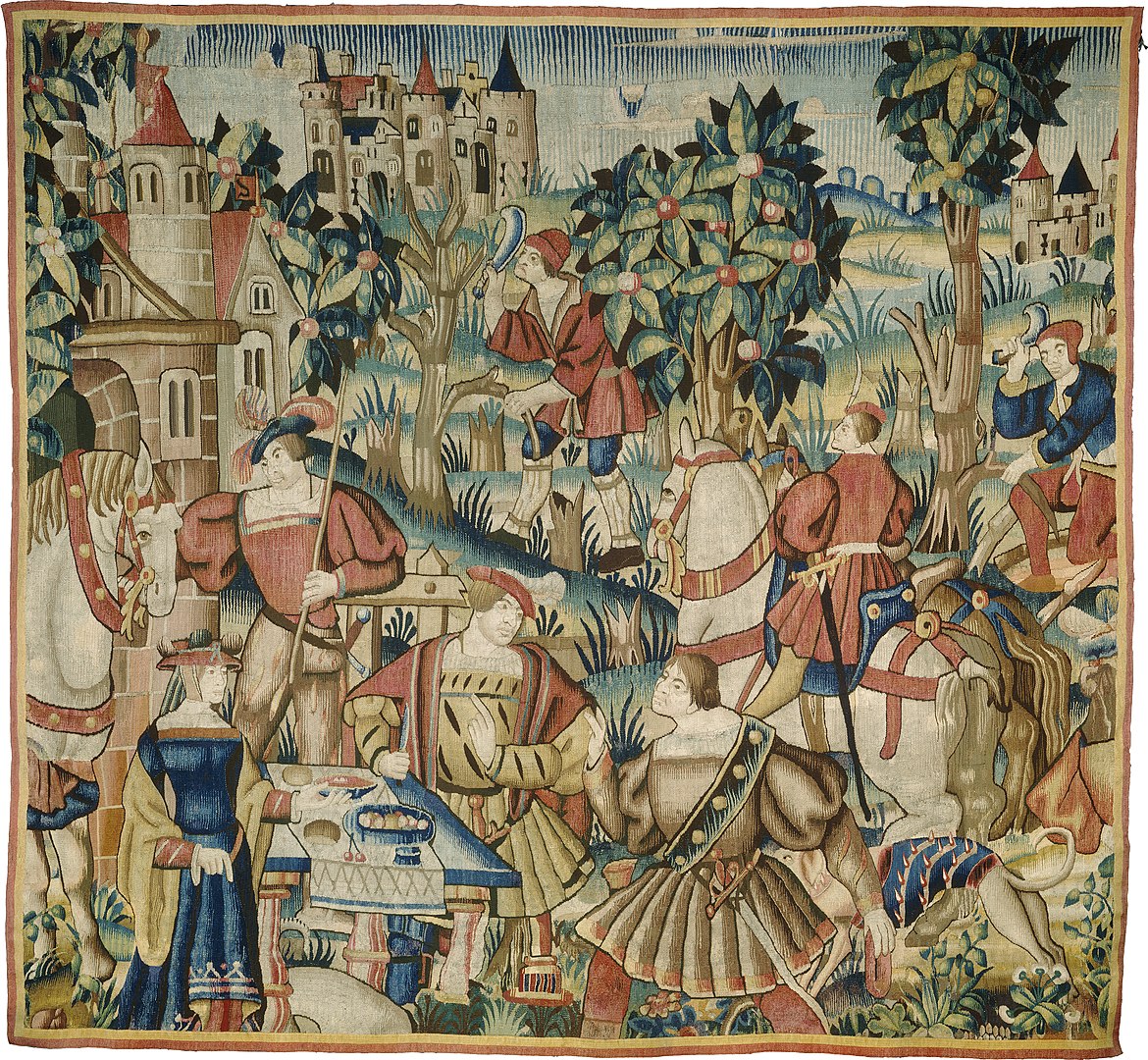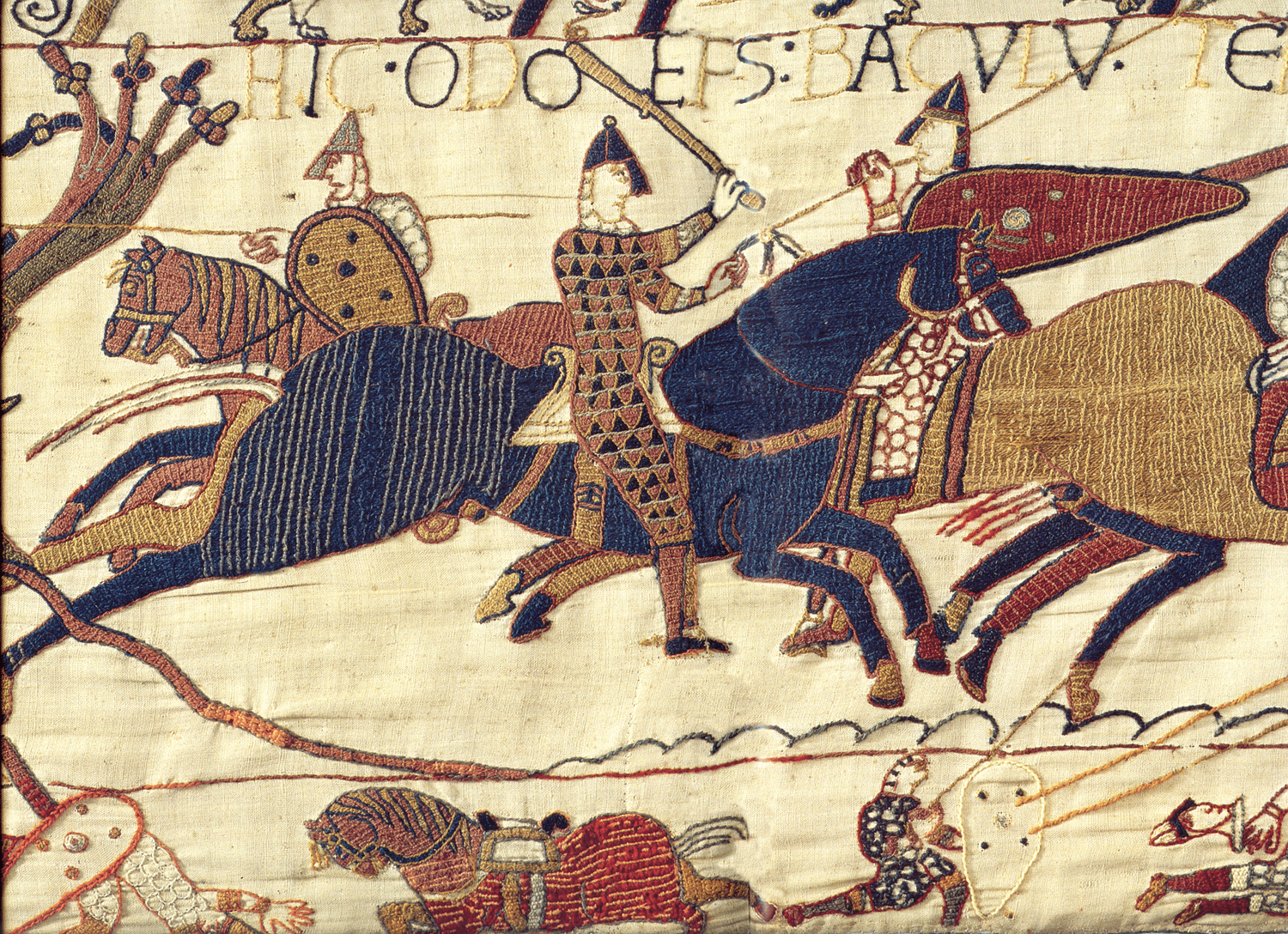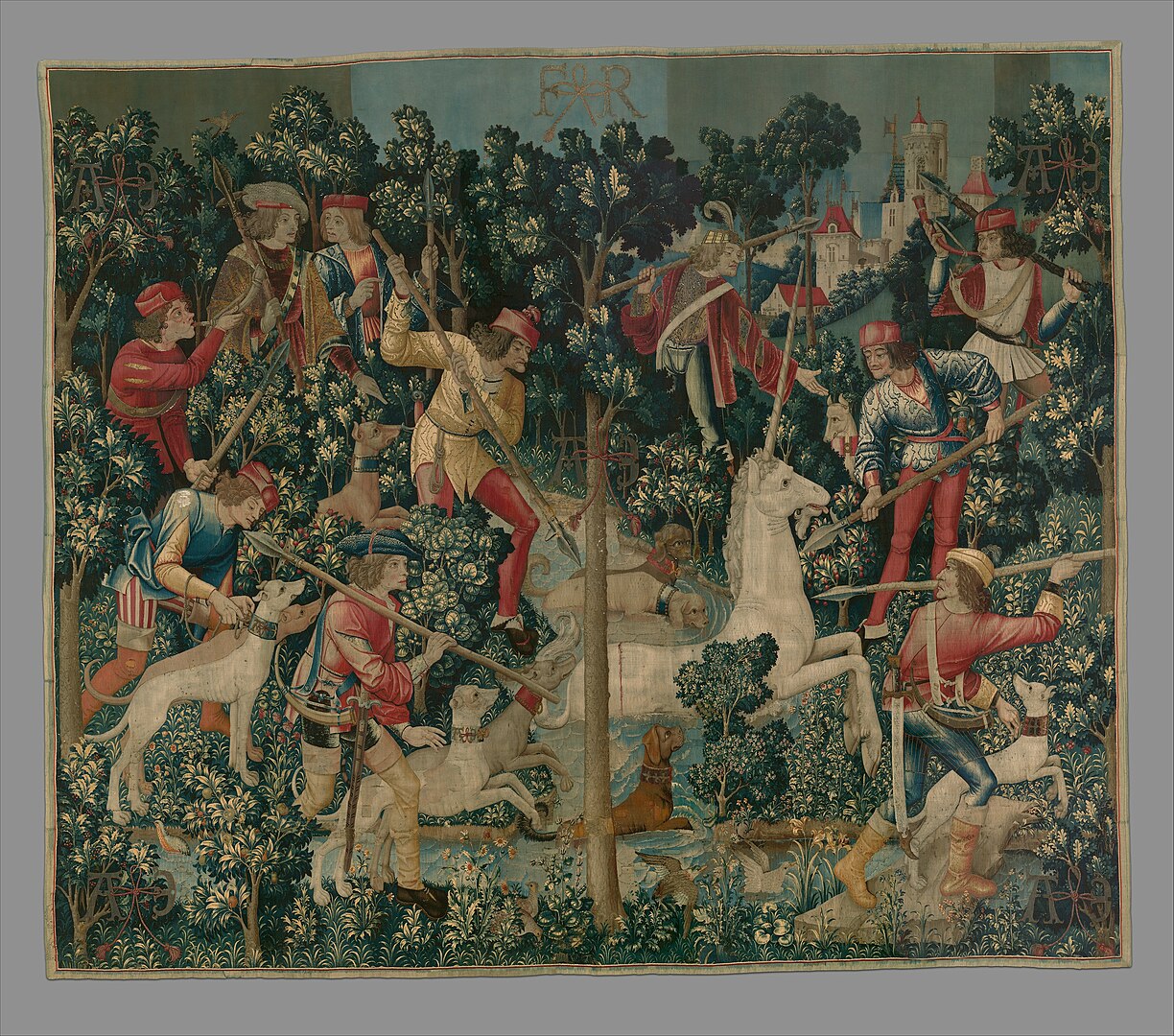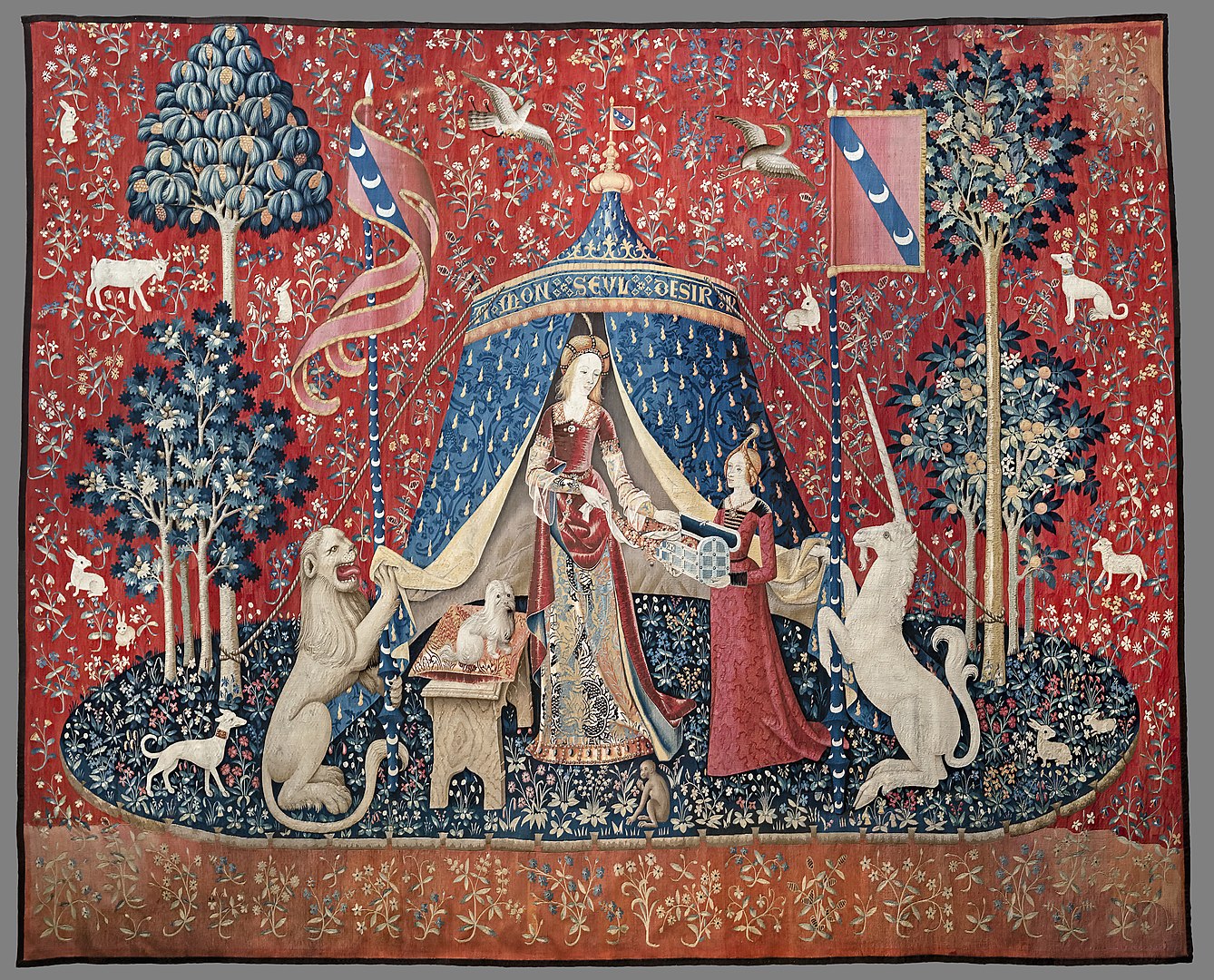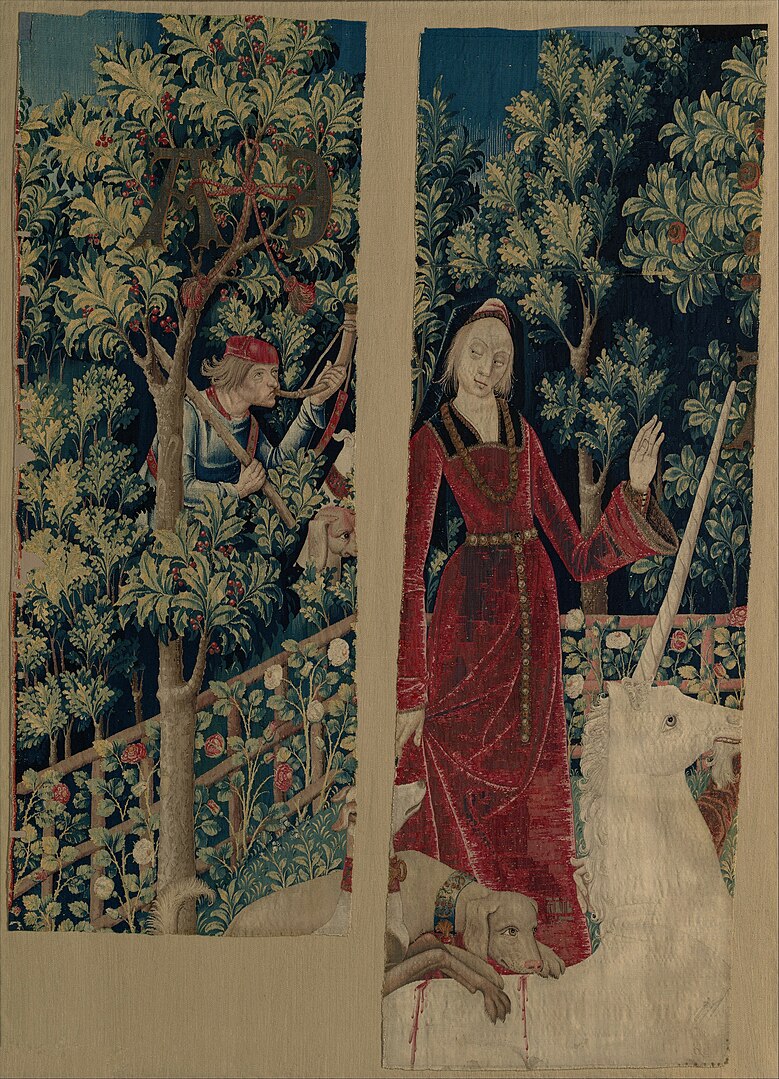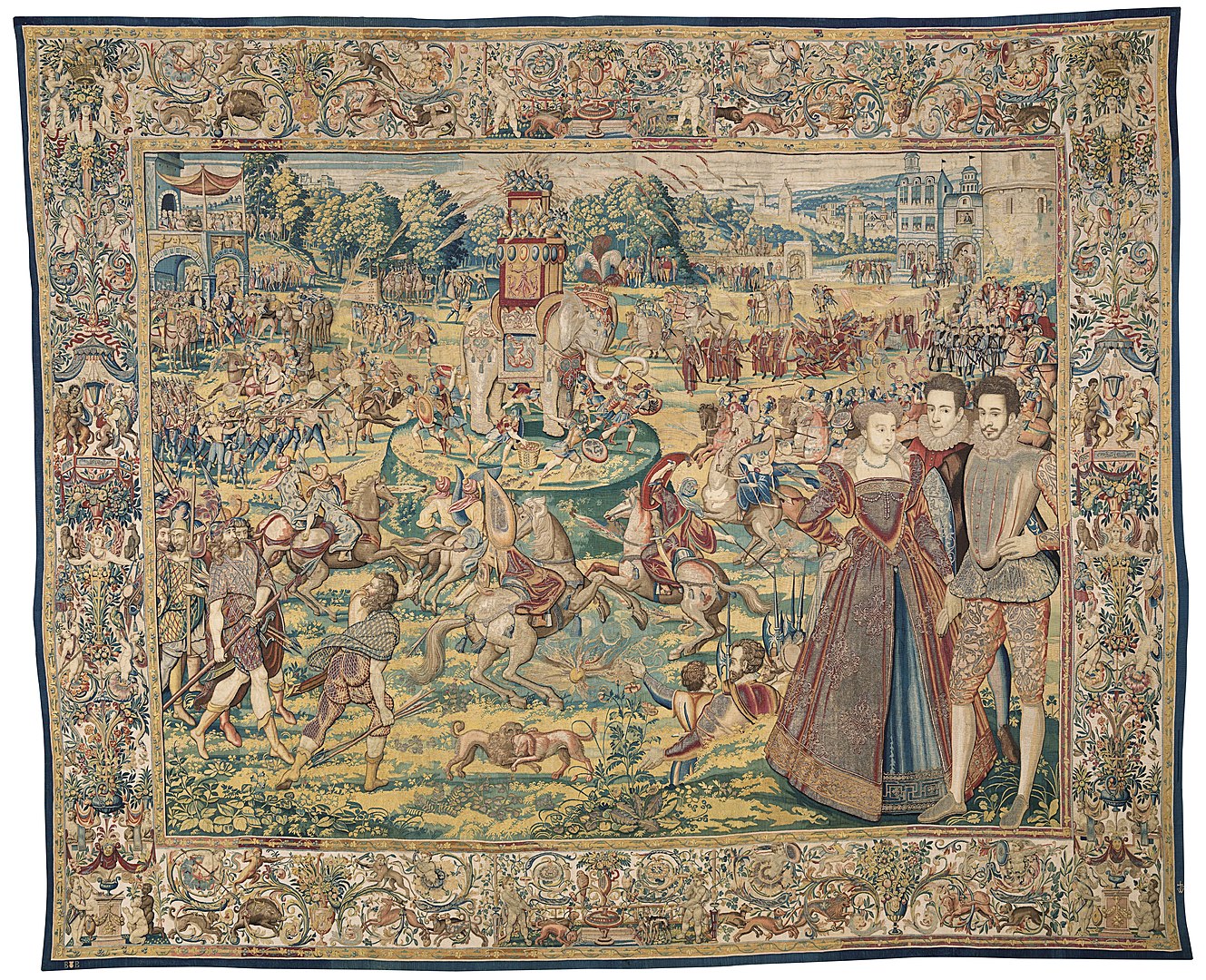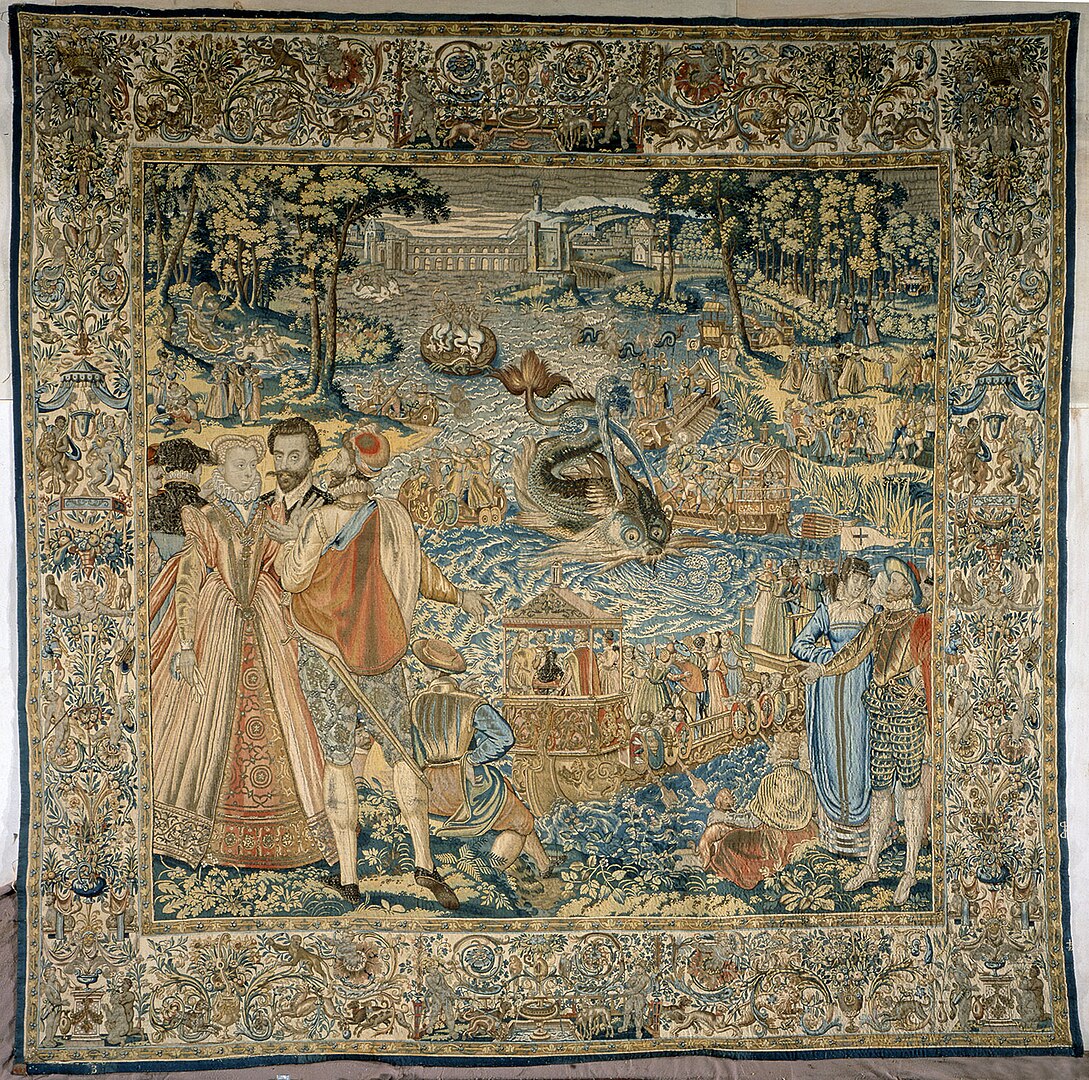A tapestry is a form of textile art, traditionally woven by hand on a loom. It is distinguished by its complex and decorative designs, which are woven directly into the fabric, creating a unique interplay of pattern and texture. Unlike paintings or prints, tapestries are made of colored threads, often wool or silk, interwoven to form intricate, multi-dimensional images and motifs. This method differs from other forms of textile decoration such as embroidery, where the design is stitched onto a base fabric.
Historical Significance of Tapestries in Art and Culture
Tapestries hold a significant place in art and culture, reflecting the social, political, and religious narratives of their times. In the medieval and Renaissance periods, they were more than just decorative items; they were symbols of status and power. Nobility and the church commissioned elaborate tapestries to showcase their wealth and influence. These artworks often depicted historical events, biblical stories, or mythological scenes, serving as a visual storytelling medium in an era when literacy was limited.
The cultural impact of tapestries extends beyond their visual appeal. They were vital in spreading ideas and artistic styles across Europe, as they were portable and often gifted or traded among the elite. This mobility allowed for the exchange of artistic techniques and themes between different regions and cultures. In addition, tapestries played a role in preserving historical events and cultural stories for future generations. The intricate details woven into each piece provided insights into the customs, fashion, and lifestyles of the periods they represent, making them invaluable historical documents as well as works of art.
Early Beginnings in Ancient Civilizations
The art of tapestry weaving traces its origins to ancient civilizations, where it emerged as one of the earliest forms of decorative arts. In ancient Egypt, Greece, and the Near East, tapestries were initially simple, featuring geometric patterns and basic color schemes. These early creations were not just artistic expressions but also served practical purposes, such as wall hangings, floor coverings, and ceremonial garments.
This craft was highly regarded, often associated with both spiritual significance and social status. The techniques and motifs varied across cultures, reflecting local traditions and beliefs. These ancient tapestries laid the foundation for the more complex and sophisticated designs that would develop in later centuries, marking the beginning of a long and evolving history of tapestry art.
Exploring the Historical Narratives of Renowned Tapestries
Throughout history, tapestries have served as a unique canvas for storytelling, capturing the essence of eras, events, and cultures. From the detailed depictions of historical battles to the intricate portrayal of mythical tales, these woven artworks offer a fascinating glimpse into the past.
In this exploration, we will delve into some of the most renowned tapestries, each narrating its own captivating story.
Bayeux Tapestry
The Bayeux Tapestry is an iconic medieval artifact, renowned for its historical and artistic significance. Despite its name, it is technically embroidery, meticulously stitched rather than woven. Created in the 11th century, this impressive piece is approximately 70 meters long and 50 centimeters tall, and it vividly narrates the events leading up to the Norman Conquest of England and the Battle of Hastings in 1066.
The tapestry is remarkable for its vivid depiction of the historical events, people, and even tools used at the time. It tells the story visually of the rivalry that erupted into the renowned fight between William, Duke of Normandy, and Harold, Earl of Wessex. The story is presented in a sequence of vignettes that flow together practically comic book-style, and are abundant in information on medieval attire, architecture, and daily life.
A priceless resource for learning about Europe in the eleventh century, the Bayeux Tapestry provides insights into the social and political climate of the era. It is an important source for both historians and art fans since it depicts a range of ordinary activities, from eating to fighting, and it also features representations of historical personalities and events. It is kept in the Bayeux Museum in Normandy, France, and never fails to stimulate curiosity and admiration with its fascinating history and superb craftsmanship.
The Unicorn Tapestries
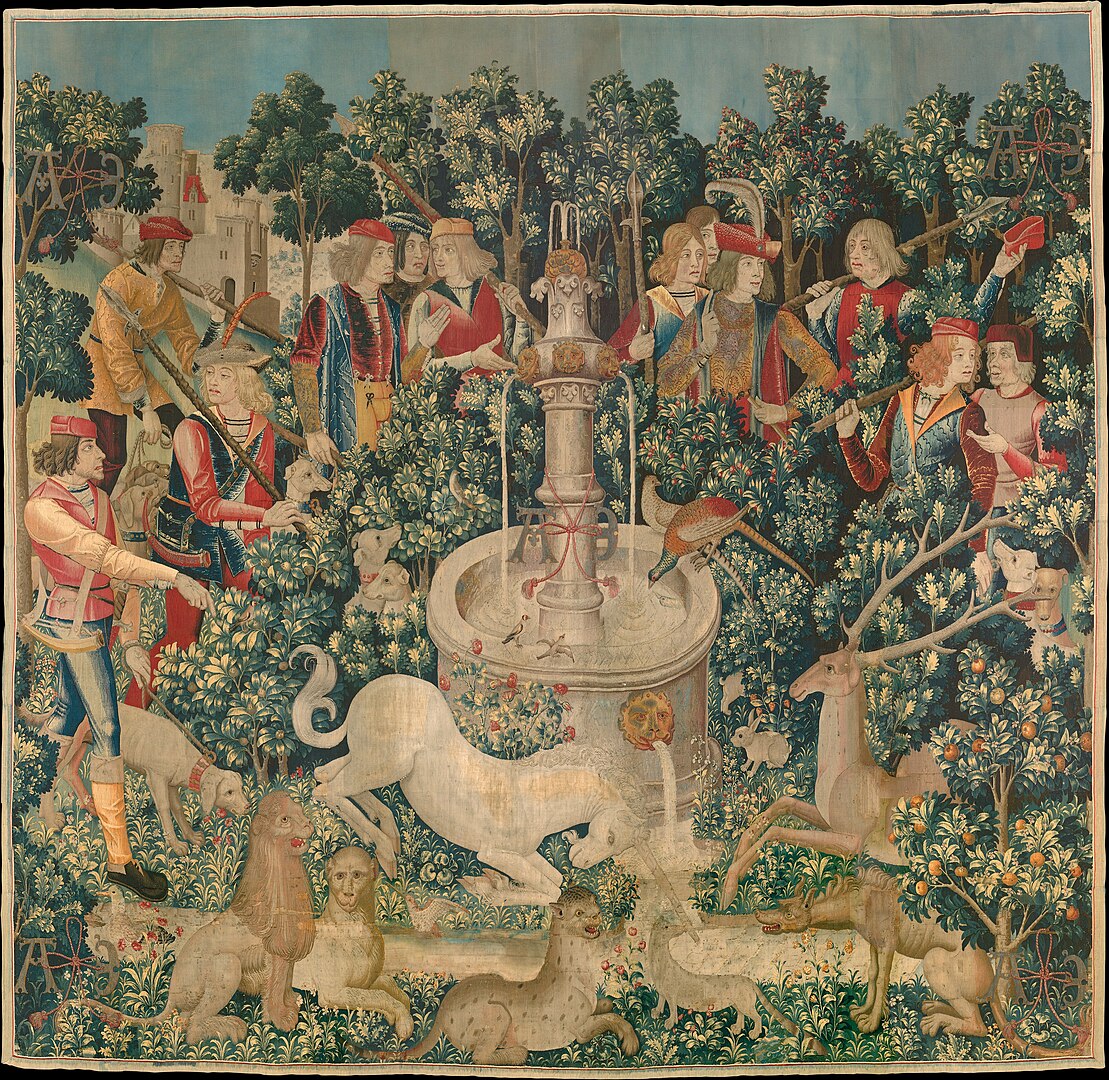
The Unicorn Tapestries, a series of seven magnificent wall hangings from the late Middle Ages, are celebrated for their beauty and mysterious symbolism. Created in the 15th to early 16th centuries, they are most famous for their portrayal of a mythical unicorn. These tapestries are believed to have been crafted in the Southern Netherlands, which was renowned for its high-quality textile production.
Each tapestry in the collection recounts a different story about a unicorn chase. However, the tapestries are rich in symbolic meaning beyond the literal depiction of this hunt. Many people regard the unicorn as a Christ figure because it is typically regarded as a symbol of purity and grace. The hunt can be viewed as Christ’s Passion, with the unicorn’s eventual capture and death signifying Jesus’ suffering. Furthermore, the unicorn is supposed to signify love and marriage, providing another depth of meaning to these paintings.
The Unicorn Tapestries are also notable for their intricate depictions of medieval life and nature. They portray a wide range of flora, animals, and birds with extraordinary accuracy and detail, making them noteworthy not only as works of art but also as historical documents. Each tapestry’s background is almost totally covered with flora and fauna, reflecting a rich and intricate natural environment.
Today, the Unicorn Tapestries are housed in The Cloisters museum in New York, part of the Metropolitan Museum of Art. They continue to enchant visitors with their mystery, intricate craftsmanship, and beauty, standing as a testament to the skill and creativity of medieval tapestry weavers.
The Lady and the Unicorn
The Lady and the Unicorn” is a series of six tapestries from the late Middle Ages, now housed in the Musée de Cluny in Paris. Dating back to the end of the 15th century, these tapestries are considered one of the greatest works of art of the French Middle Ages. They were likely woven in Flanders, a region renowned for its superb tapestry craftsmanship, and are made from wool and silk.
Each of the six tapestries displays a noble lady with a unicorn on her left and a lion on her right, over a backdrop of millefleur (thousand flowers). Taste, hearing, sight, smell, and touch are represented by five tapestries. The sixth tapestry is often interpreted as representing love or understanding and bears the enigmatic motto, “À mon seul désir” (to my only desire).
The allegorical representation of the senses is a central theme in these tapestries. For instance, in the “touch” tapestry, the lady is seen holding the unicorn’s horn, while in the “taste” tapestry, she is taking sweets from a dish. The intricate depiction of the senses alongside the prominent presence of the mythical unicorn and lion adds layers of symbolic meaning, often interpreted as exploring the human experience and desire.
The artistry of “The Lady and the Unicorn” is remarkable for its vibrant colors, detailed portrayal of the natural world, and the complex expressions of the figures. The tapestries are renowned for their delicate rendering of the fine features of the lady, the animals, and the floral background, creating an almost otherworldly charm. This series is not just a stunning example of medieval tapestry work but also a profound reflection of the era’s artistic, cultural, and philosophical understandings.
The Apocalypse Tapestry
The Apocalypse Tapestry is a monumental medieval work of art, originally measuring an impressive 140 meters long and 6 meters high. Created in the late 14th century, specifically between 1377 and 1382, it was commissioned by Louis I, Duke of Anjou, and is based on the Book of Revelation by Saint John the Divine. This tapestry series is one of the oldest and largest surviving tapestries from this era and is a significant piece of French medieval art.
The tapestry covers the Apocalypse story from the New Testament. It is divided into scenes, each of which clearly reflects the dramatic and symbolic visions recounted in the Book of Revelation. The rise of the Antichrist, the conflict between good and evil, and the final judgment are among them. The imagery is symbolically rich, representing a variety of celestial and earthly beings, from angels and demons to monarchs and commoners, and reflects the medieval worldview and religious beliefs.
The artistic style of the Apocalypse Tapestry is characterized by its vivid colors, dramatic figures, and intricate detail. The use of color is particularly noteworthy; despite the passage of time, many of the tapestry’s hues remain vibrant, contributing to the intensity and dynamism of the scenes depicted. The Apocalypse Tapestry not only serves as a religious and artistic masterpiece but also provides valuable insights into the societal, cultural, and political thoughts of 14th century France.
Originally housed in the Cathedral of Angers, the tapestry suffered damage and neglect over the centuries, with portions lost or destroyed. However, significant sections have been preserved and restored, and are now displayed at the Château d’Angers in France. The Apocalypse Tapestry continues to be an object of fascination and study, attracting visitors from around the world, drawn to its historical significance and artistic grandeur.
The Valois Tapestries
The Valois Tapestries are a unique set of eight hangings that offer a glimpse into the opulent court life of 16th-century France. Created in the late 1500s, they are believed to have been commissioned by Catherine de’ Medici, the queen mother of France, and celebrate the lavish court festivals and entertainments of the Valois dynasty.
Each tapestry in the collection depicts a different scene of courtly life, featuring feasts, tournaments, dances, and other festivities. They are remarkable for their detailed representation of various members of the European nobility, including Catherine de’ Medici herself, her sons (the last three Valois kings of France), and numerous courtiers and dignitaries. This makes the Valois Tapestries an invaluable historical document, providing a rare and detailed visual record of the personalities and costumes of the European elite of the time.
The craftsmanship of the Valois Tapestries is exemplary of the Flemish weaving traditions of the time. Flemish weavers were renowned for their skill in producing intricate tapestries, and the Valois Tapestries are no exception, demonstrating a masterful use of color, texture, and composition.
Today, the Valois Tapestries are housed in the Uffizi Gallery in Florence, Italy. They continue to be admired for their historical significance and artistic beauty, serving as a vivid window into the splendor and complexity of Renaissance court life.
Tapestries as a Record of Historical Events
Tapestries have long served as more than just decorative art; they are valuable historical documents, capturing and recording significant events and eras. Throughout history, tapestries have been used as a medium to narrate stories, commemorate battles, and celebrate important figures and happenings. This use of tapestries as historical records is particularly prominent in eras when literacy rates were low, and visual storytelling was a key means of communication.
Moreover, the intricate details woven into each tapestry provide a wealth of information about the period’s artistry and craftsmanship. From the materials and dyes used to the weaving techniques, they offer a glimpse into the technological and artistic capabilities of the time.
Storytelling Through Visual Art
Tapestries, with their intricate designs and detailed imagery, have historically been an effective medium for narrating stories, conveying messages, and expressing cultural and societal values. This form of storytelling is particularly impactful because it combines artistic expression with narrative elements, creating a rich, immersive experience for the viewer.
Tapestries are replete with symbols that hold specific meanings. Animals, plants, mythical creatures, and even colors are not randomly chosen but are imbued with symbolism. For instance, in the Unicorn Tapestries, the unicorn itself symbolizes purity and grace, often interpreted as a Christ figure in Christian iconography. Similarly, in “The Lady and the Unicorn” series, each of the senses is symbolized through different actions and elements, like the touch of the unicorn’s horn or the playing of music.
Final Thoughts
Tapestries, as an art form, embody a timeless elegance that transcends centuries, merging historical narrative with artistic expression. These intricately detailed and deeply symbolic woven works of art offer much more than just visual appeal; they are also powerful historical narratives.
Today’s market offers a diverse range of tapestries, each with unique characteristics and styles suited for various tastes and spaces. Their enduring appeal lies not only in their intricate craftsmanship but also in their ability to connect contemporary viewers with the tapestry of human history.
